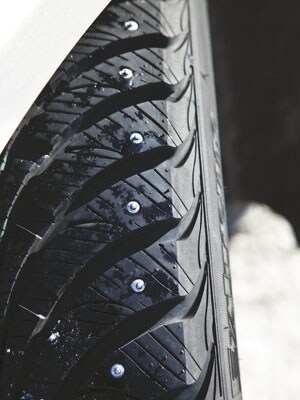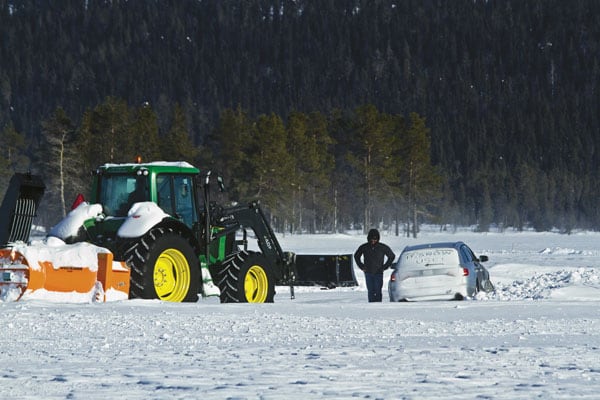
Driving On Ice
Learning to do the Scandinavian flick on a frozen lake near the Arctic Circle
You’d assume a frozen lake is no place to hone your rally technique: It’s -25°C, you’re dressed like a bear, and forget walking, it’s so slippery that standing is difficult. Driving around the big oval track on the lake is an exercise quite lacking in sanity. But that’s exactly what we’re doing as former European rally champion Jochi Kleint watches us from the outside, screaming instructions into his radio, tutoring us on car control: “Car number 8, give gas, give gas, now catch it, catch it!”
Welcome to Arjeplog, the winter testing capital of the world. Just short of the Arctic Circle, this town of 1500 inhabitants swells to 5000 during the winters, as testers and engineers from every major car company descend on it. Tata Motors’ new trucks are cold-weather-tested here; as will be Mahindra vehicles in the next season. ABS brakes were developed here in the 70s, traction control, ESP and other electronic safety systems are calibrated and prototypes hammer around the frozen lakes to hone dynamics. The place is swarming with test cars, and spy photographers lurk behind every snow bank.
Which is the serious side of things. We, on the other hand, are going to have some fun and hone our driving skills, courtesy Audi’s winter driving experience program. We have are a brace of gleaming A4 Avants (estate) — studded winter tyres, full underbody protection lest we plough into a snow bank, quattro four-wheel-drive to make the most of whatever little traction is available — and a single-point agenda: mastering the Scandinavian flick.
 If you’re even remotely interested in rallying you’ll have heard of the Scandinavian flick, the pendulum turn made popular by Finnish and Swedish drivers in the sixties and seventies, who used it to get their Volvos, Saabs and Minis turned into corners.
If you’re even remotely interested in rallying you’ll have heard of the Scandinavian flick, the pendulum turn made popular by Finnish and Swedish drivers in the sixties and seventies, who used it to get their Volvos, Saabs and Minis turned into corners.
Belting down a forest stage at rally pace and simply tugging the steering wheel in the direction of the turn would send you flying off the cliff due to the immense momentum. You could slow the car down before the corner, but who wants to watch a slow rally driver? Enter the Scandinavian flick, a technique which at first looks like a colossal error in judgment but pulled correctly makes you faster, more spectacular and gets your pictures in the papers.
The technique in a nutshell? With the car in the middle of the road, brake and momentarily turn against the direction of the turn to get the tail swinging, then off the brakes to shift weight to the rear, fling the steering the other way, get the tail to pendulum around the front, and as the nose points towards the apex give it gas, a dab of corrective lock, more gas, and power out of the corner in a beautiful sideways drift.
Looks phenomenal from the outside; from behind the wheel you get a high that has to be illegal.
But first the basics. We start by driving round the oval in the 2.0-litre TFSI A4 Quattro. It’s the estate body style but dynamically it’s similar to the sedan we have in India (though we don’t get the 2.0-litre engine). Quattro is intrinsic to any high-performance Audi; after all the brand shot to prominence with the quattro rally cars that introduced four-wheel-drive to the world of rallying. Drivers like Stig Blomqvist, Hannu Mikola, Walter Röhrl, and the only driver whose sexiness equalled the machine, Michèle Mouton, made the WRC all their own. From past experience, I know that quattro provides terrific grip, much more than rear-wheel-drive, and the advantage gets amplified in wet. But I also know that it is next to impossible to get the tail sliding (if it is, you are heading off a cliff), and at the limit they tend to understeer much more than RWD cars.







